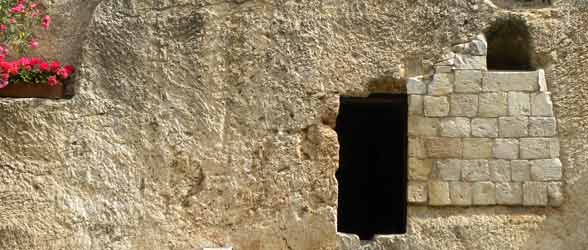 There was once a seminary class in which the seminarians were asked about the resurrection of Jesus Christ. What if you know that Jesus was really not raised bodily from the dead – would it negatively impact your faith? No, they all said. We are mature enough in our faith that even if we knew that Jesus was not raised, it wouldn’t shake us in our faith. What a bunch of silly nonsense!
There was once a seminary class in which the seminarians were asked about the resurrection of Jesus Christ. What if you know that Jesus was really not raised bodily from the dead – would it negatively impact your faith? No, they all said. We are mature enough in our faith that even if we knew that Jesus was not raised, it wouldn’t shake us in our faith. What a bunch of silly nonsense!
On the third day he rose again. We believe that. We don’t mean by that that Jesus was spiritually resurrected in the hearts of this followers by faith or some such mumbo-jumbo. The disciples didn’t have a mass hallucination. They weren’t swayed by wishful thinking into imagining that Jesus was raised. They didn’t reinterpret Jesus teaching and seek to draw lasting meaning from his life by reconfiguring history into a resurrection event. Jesus died on the cross. He was really dead. And on the third day he was raised from the dead. Bodily. A lifeless corpse was resurrected. Not resuscitated, resurrected. He was actually dead and then his dead corpse was reanimated.
I’ve talked with “Christians” who don’t believe in a literal bodily resurrection. I’ve even talked to a pastor or two who don’t really believe in the bodily resurrection. The whole thing seems a little too miraculous and skeptical scientific-type folks don’t necessarily want to believe it. Of course, you can’t really be a Christian if you don’t believe in the bodily resurrection of Jesus Christ. It is absolutely at the center of what it means to be a Christian at all. Being a Christian who doesn’t believe in the bodily resurrection of Jesus Christ from the dead is like being a meat-eating vegetarian, or a wine-guzzling tea-totaler. It just doesn’t make sense. It is an oxymoron. To be a Christian means believing in the risen Lord Jesus Christ.
Jesus rose on the first day of the week and he was met in the garden by Mary Magdalene. She saw, recognized (eventually, in shock and awe), talked with, and touched that risen Lord. He was seen later by Peter, John, the eleven at once (including “doubting Thomas” – a very modern, scientific sort of person, seemingly), by the apostle Paul, and by over 500 people on one occasion (1 Cor. 15). The weight of this evidence is overwhelming. Imagine a string of 500 eye witnesses testifying to such an event in a court of law.
The risen Lord Jesus was not like any resuscitated human being. If your uncle George died on an operating table and was shocked back to life, he wouldn’t be like the risen Lord Jesus. Jesus walked through walls, could conceal or reveal himself at will, ascended into heaven on the clouds – yet he also ate and drank, could be touched and talked with. He could build a fire and take a walk. He had a spirit body. And that body is the firstfruits of the resurrection. It is new creation and it is a type of the bodies we will all receive on resurrection day (“I believe in the resurrection of the body…”).
The resurrection is critical to orthodox Christian belief for a whole lot of reasons. First of all, it validated Jesus’ message and confirmed his identity. He said in advance that he would die and be raised again. He did exactly that. This proves that everything he says is true. Anyone who can predict and accomplish such a thing as that has certainly validated his message and demonstrated his trustworthiness.
The resurrection is also critical because it is sort of Act II of our redemption. Act I is the crucifixion itself – Jesus died for our sin. He conquered sin at the cross. It is through the cross that forgiveness of sins is possible. But in the resurrection he also conquered death. It is through the resurrection of the dead that eternal life is possible.
We believe that. We preach it. It is true. Jesus lives!